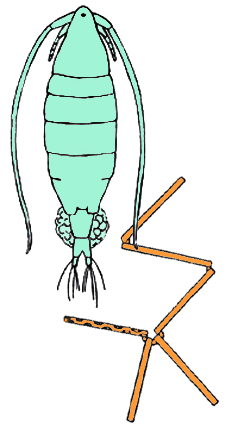In 1934, Otis Barton and Will Beebe set a diving record in a small spherical bathysphere, descending to 3,028 feet. They were pioneers even in today’s context, the first to make direct observations of deep sea wildlife, a realm that remains largely unexplored.
From the small metal orb, Beebe described the appearance of, among many other things, “marine snow”.
Marine snow (also, “sea snow”) is comprised of the falling bits of debris, dead plankton, fecal matter and miscellany that aggregate and sink down into the briny deep. Sea snow delivers the sun energy that is initially captured in the top layers of the ocean (for example, by algae running photosynthesis) into the darkness. This is a prime mechanism of “vertical transport” that sustains deep-sea consumers who might never see the light of day.
Today, scientists attempt to quantify and characterize the snow, as well as the branches of the food web that graze upon it.


Leave a Reply